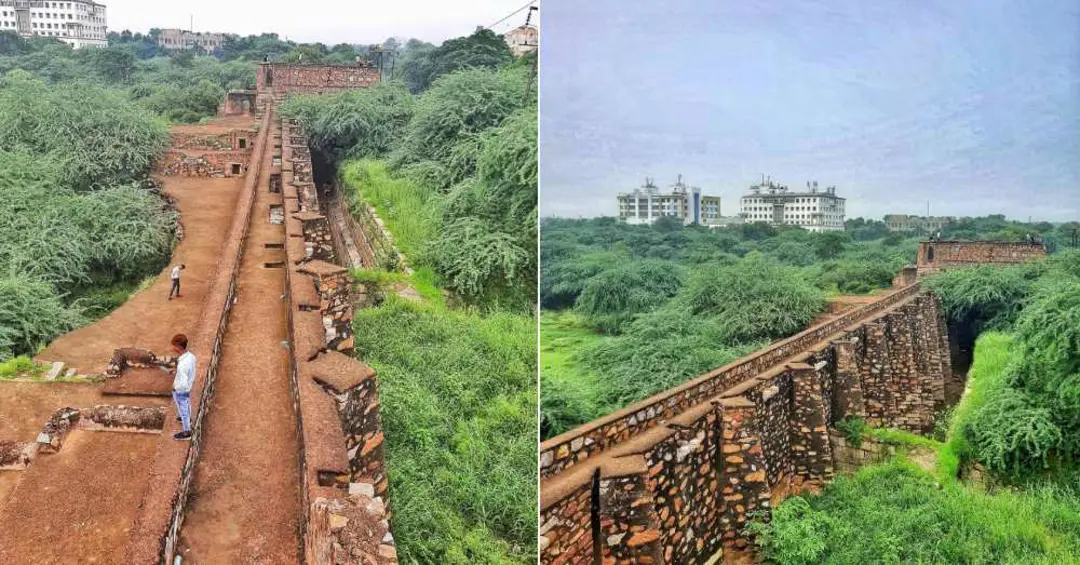Description

Copyright infringement not intended
Picture Courtesy: https://so.city/delhi/article/explore-the-hidden-gem-called-satpula-bridge-and-thank-us-later-for-it
Context: Historical significance and enduring legacy of the Satpula, a 14th-century dam built by Mohammad Bin Tughlaq in Delhi.
Key Highlights
- The Satpula dam, constructed in 1340, served dual purposes: providing irrigation water and acting as a defence structure against invaders.
- The dam was strategically built to control the flow of water from a canal originating in the Aravalli hills.
- It served as a boundary wall for Jahapanah, the fourth city of Delhi, and featured seven arches through which water flowed from the canal.
- The dam's construction using Delhi quartz, a stone found in the Aravalli region, highlights the advanced masonry and architectural skills of the Tughlaq era.
- The dam's structure includes slits on the top for surveillance, allowing guards to monitor and defend against potential intruders.
- Sir Sayyid Ahmad Khan's Asar-us-Sanadid describes the dam's construction and its role in facilitating water flow through arched openings.
Cultural Significance
- The Satpula dam holds spiritual significance, with beliefs in the healing properties of the canal water attributed to nearby Sufi saint Nasiruddin Mahmud.
- Traditionally, the area hosted a Diwali mela where attendees would take a holy dip in the waters, reflecting the cultural and religious importance of the site.
Conservation Efforts
- The Archaeological Survey of India (ASI) played a crucial role in conserving the Satpula Dam and preserving its architectural heritage for future generations.
- Efforts to restore and maintain the site have contributed to its recognition as a significant historical landmark in Delhi.

Architectural Marvel
- Despite the bustling urban environment of modern-day Delhi, the Satpula Dam retains a sense of serenity and historical charm, offering visitors a glimpse into the city's rich heritage.
- Its unique architectural features and spiritual ambience make it a remarkable testament to the ingenuity of mediaeval Indian engineering and design.
Conclusion
- The Satpula dam stands as a remarkable symbol of Delhi's historical and cultural heritage, showcasing the enduring legacy of Tughlaq-era architecture and engineering prowess.
Source:
Indian Express
|
PRACTICE QUESTION
Q. Tughlaq architecture often employed innovative materials like red sandstone and ingenious techniques like "batter" (sloping walls) for added strength. However, some argue these innovations were primarily driven by practicality and not necessarily a pursuit of artistic expression. Evaluate this claim.
|











